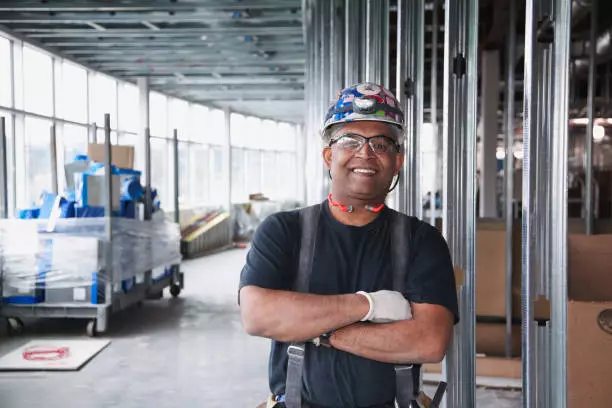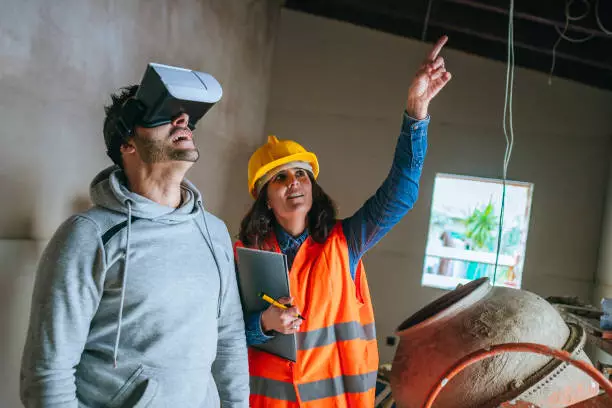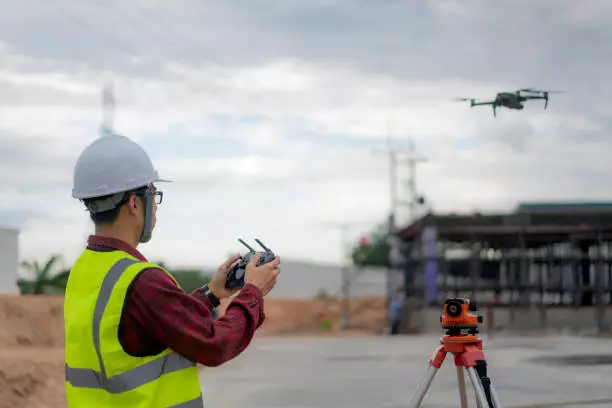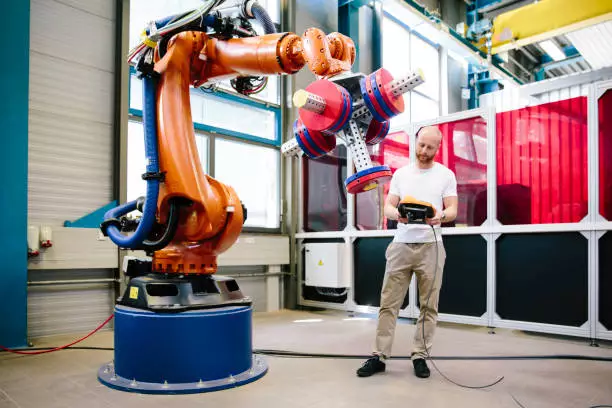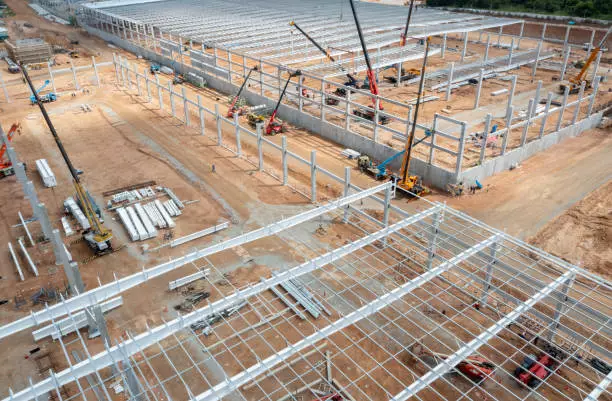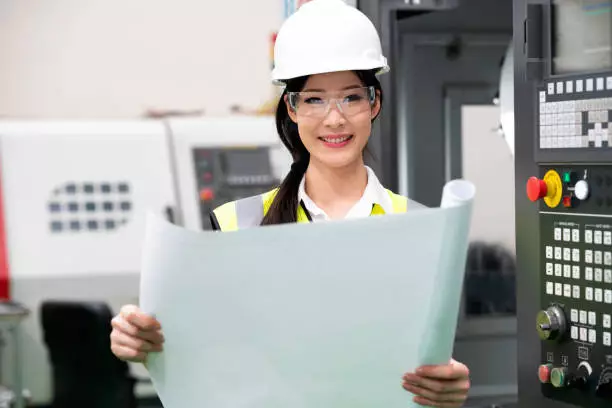Building Technology Trends That Will Change The Future Of Construction
Building technology in recent years has influenced construction greatly. Every stage of construction is influenced by technology. From the architectural stage to the final phase, we see the ever-increasing presence of technology. Building technology evolves rapidly due to the drive for more efficiency, safety, and accuracy. Innovation in building technology also lets humans express aesthetics in construction.
Some examples are the Marina Bay Sands hotel in Singapore, the man-made Palm Jumeirah, UAE, Ferrari World, Abu Dhabi, and much more. These magnificent structures are a show of human ingenuity and technology as regards construction. According to Deloitte, 76% of construction heads are investing in building technology, helping them stay ahead of the competition.
Building technology, in retrospect, aims to make construction more efficient, cut costs and increase productivity. This is achieved by employing both light and heavy mechanisms. This article will showcase some building technology trends that will change the future of construction.
7 Technology Trends That Can Change The Future Of Construction
1. VR for Architecture
VR, or Virtual Reality, is the use of computer modeling and simulation to immerse oneself in a form of artificial reality using HMDs (head-mounted devices). Virtual Reality for architecture has recently been adopted and it is changing the way architects communicate their ideas or plans to a client before they are built. A person can step into their planned home before it is built and make adjustments before construction begins.
For example, VR can help a client understand their structure from different perspectives. A room can be observed at different times of day, with different colors of paint, and so on. Examples of virtual reality HMDs are Facebook’s Oculus Rift, HTC VIVE, and Sony’s Playstation VR.
2. Drones
Drones have been priceless when it comes to construction. They are perfect for landscape mapping and viewing areas that are difficult for the human eye to see. Drones are currently able to take volume measurements in the field in real-time. Drones are getting higher resolution cameras, which will help in site monitoring.
These high-resolution cameras will further help in the preparation of progress reports after collecting site data. In 2017, falls on-site were the second highest cause of deaths in the UK construction industry. Drones increase risk management and safety. Unsafe structures could lead to harm to personnel.
Drones can survey the area while the drone operator remains on the ground. Drones are an invaluable set of building technology. As technology evolves, so will drones.
3. Building Information Modeling
Building information modeling, or BIM, is similar to how VR helps architects. BIM can be considered one of the most prominent construction trends of recent years, with its conceptualization beginning in the 1970s and adoption beginning in the 2000s. BIM is simply the use of 3D modeling on a construction project.
The model evolves if any input is made by any sector of the project. All architects, engineers, and subcontractors on the project can utilize the latest evolved data remotely. BIM allows for synchronization across teams, cost estimation, life cycle scoring, clash detection, and much more. Examples of BIM solutions are Revit and AutoCAD Civil 3D.
These solutions greatly surpass the primitive 2D method, which poses a high risk of disorganization. In the United Kingdom, it is made mandatory for government-large-scale projects.
4. Robotics
Robots are an excellent form of the workforce. This is because they do not feel fatigued or mentally strained. Robots can carry out repetitive tasks like laying bricks. Robots offer precision and great accuracy when carrying out tasks. For now, robots cannot carry out complex tasks because most robots are incapable of learning.
In essence, automated tasks are ideal for robots. Demolition robots are yet another category of construction robots that are poised to enter the norm. While they are slower than demolition workers, they are significantly safer and inexpensive when it comes to eliminating concrete and structural parts towards the end of a building’s existence.
Due to continued human advancement in the field of artificial intelligence and investment in building technology, we can envision a future where robots replace human labor on-site. This could mean the loss of jobs, but more safety for humans. An example of a site robot is the MULE (Material Unit Lift Enhancer).
This is primarily a logistics robot that can move materials with spot-on precision.
5. Prefabrication and Offsite Construction
Prefabrication is an emerging trend in building technology, and it is most likely to reshape construction as we know it. It is simply the use of 3D printing to manufacture the building in parts and transport it to the site for assembling and usage. This saves a chunk of construction time and money.
Prefabrication is especially popular in Dubai; it was used on the Dubai Mall and the Dubai opera. Modularization, or offsite construction, is a building technology that holds the promise of 3D printing an entire building in an extremely short time. An example of this is a precast house built in two days in Saudi Arabia.
Prefabrication and modularization might phase out the old style of building houses, but it still has a long way to go in terms of durability.
6. Wearables and Site Sensors
Wearables and site sensors provide safer working conditions for workers. Sensors collect a wide range of information. The Internet of Things (IoT) is used to relay this information. What is IoT, and how does it contribute to building projects?
In summary, the technology assists in the monitoring of worksites and utilizes data to forecast patterns and avoid issues, rather than relying solely on restorative operations when anything goes wrong. This gear, equipped with sensors, is worn by on-site workers equipped with sensors and biometrics; each employee’s vitals and exact locations are known.
Site sensors can alert site workers and supervisors to possible dangers on the project, making it safer. Noise levels, dust saturation, temperature, and the presence of volatile compounds can all be monitored. When a risk is detected in a specific region, the sensors can alert nearby personnel.
7. Artificial Intelligence
As a whole, artificial intelligence is shaping construction, AI cuts across safety, work efficiency, communications, and lots more. AI utilizes optimization in finding the optimal solution to a given scenario or problem. AI also helps in cutting down on labor shortages. Firms could increase their productivity immensely through AI analytics.
This is brilliant news for construction companies, who can’t find sufficient human labor to staff their project sites, and for those firms that are the norm rather than the exception. In retrospect, Artificial Intelligence covers the scope of technological advancement in building technology.
Conclusion
Building technology has come a long way from ancient homes and pyramids. With the addition of technology to construction, safety levels during construction have gone up tremendously. Prefabrication and modularization are giant leaps in building technology in general. The opportunity to print a building and have it assembled in a few days goes beyond a giant leap. It is simply a new frontier in construction. Building technology is continuously evolving as a result of the desire for greater efficiency, and precision.

